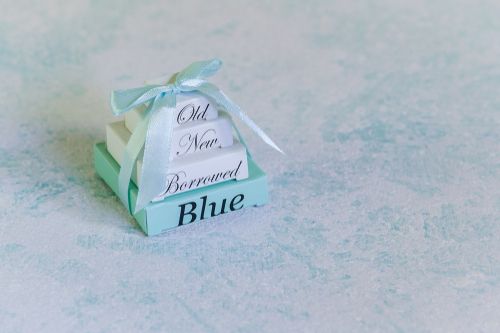 From cakes to rings to the color white, there are a number of symbols associated with weddings. While plenty of these images are accepted as commonplace, all have their origins somewhere in the past. Some still have practical purposes, while others are mere imitations of rituals that made more sense in decades gone by. If you’re curious about how some of the most common wedding traditions got started, take a look at these facts and learn how absolutely bizarre some marriage customs can be.
From cakes to rings to the color white, there are a number of symbols associated with weddings. While plenty of these images are accepted as commonplace, all have their origins somewhere in the past. Some still have practical purposes, while others are mere imitations of rituals that made more sense in decades gone by. If you’re curious about how some of the most common wedding traditions got started, take a look at these facts and learn how absolutely bizarre some marriage customs can be.
No Bride Escapes the Best Man
The best man plays a pretty important part in the wedding party. Usually a brother or best friend to the groom, this person is typically responsible for handling the bachelor party and several small activities associated with the groomsmen. Interestingly, the tradition of having a best man began as a way of monitoring the bride. According to some academics, the best man often served the groom-to-be by helping him kidnap or guard a prospective bride. Apparently, the term “best man” comes from the idea that this individual needed to be the best at keeping the bride close.
Old, New, Borrowed, and Blue
Though not as common as it once was, the tradition of giving the bride “something old, something new, something borrowed, something blue” has some sentimental origins. The old item was meant to connect the bride to her roots, while the new was to symbolize the beginning of the next step in the woman’s life. The borrowed item was originally supposed to come from a married couple as a way of passing on good fortune to newlyweds. Finally, the blue item symbolized the loyalty the couple would have for one other moving into their married life.
While most people are somewhat familiar with this tradition, very few realize that there is an additional item included in the rhyme. Dating back to Victorian England, the original rhyme ended with the phrase “and a sixpence in my shoe.” When a coin was placed in the bride’s shoe, she was said to walk a path of prosperity and bring riches to her new husband.
Repurposing the Cake
Over recent decades, couples have often practiced the habit of saving the top of their wedding cakes to place in the freezer. The idea here is to eat the top of the cake a year later during the first anniversary of the marriage. While a practical way of elongating the celebration, the actual origins of this tradition are a bit different. Once upon a time, it was expected that a bride would get pregnant relatively quickly after tying the knot. Usually, the couple would aim to start a family within a year of the wedding.
Saving the top of the cake was a way of saving money when announcing the pregnancy to friends and family. Once the bride realized she was expecting, she could call over close associates and serve the top of the cake as a way of celebrating. Since weddings have always been costly, this is a practical way to get more out of a dessert investment.
No Time To Plan an Out
Arranged marriages are not as common as they used to be, but they were once the norm for many cultures throughout history. The idea of keeping the bride and groom hidden from each other until the wedding day traces its start to arranged marriages. By keeping the couple apart, it was less likely that they would see each other and try to run away or get out of the arrangement somehow. Since couples these days tend to wait longer than ever before getting married, it can seem bizarre to think about marrying someone you won’t meet until the wedding day.
There are all sorts of customs associated with weddings. If you’re planning your big day and need a laugh, take a trip back in history and learn more about the origins of wedding rituals.
Add Your Comment